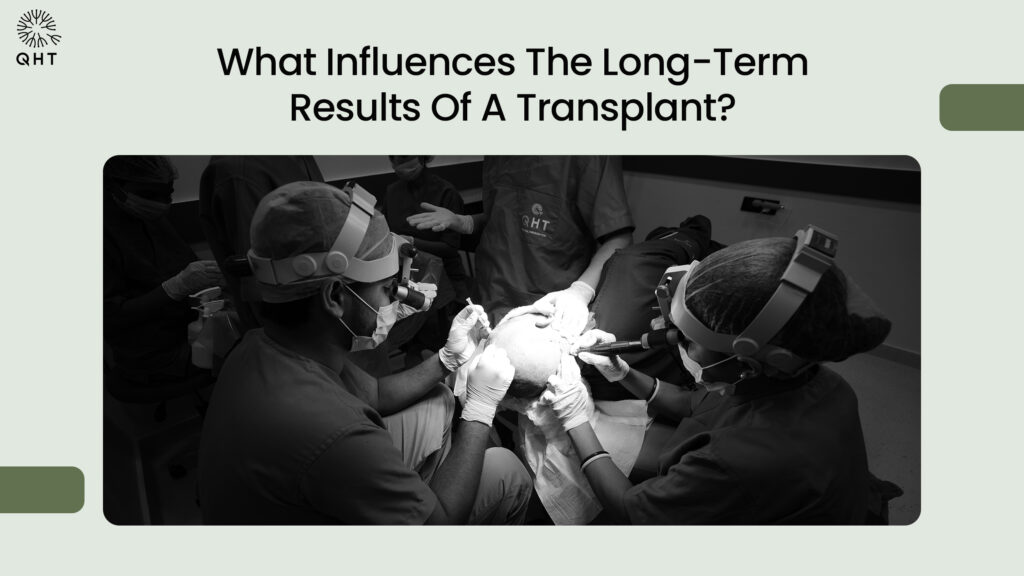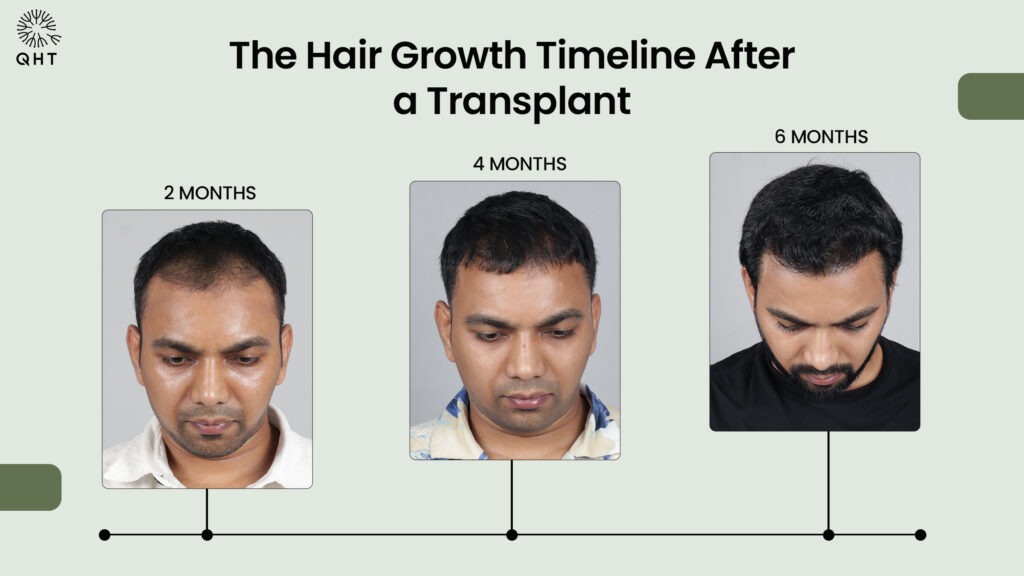Millions of individuals have to deal with hair loss every year, and in many cases, the situation might seem like a battle that is constantly going on. This battle often defeats many by making them lose self-confidence. Although drugs, shampoos and supplements can reduce the whole hair shedding process, they are not a proper and lasting solution. Hair transplants fit the described case, as such a procedure has become a massive hit due to its powers to regrow not only your hair but also your confidence. However, the big question that runs through the minds of all potential patients is how long a hair transplant lasts. Is it permanent in a real sense or can the results just vanish within a few years? Through this blog, we are going to delve into the real truth behind hair transplant longevity, elaborate on how much hair transplant results can be expected to last and dig deep into the hair transplant results so that you can make an informed decision.
Some Basic Knowledge On Hair Transplants
Hair transplants are procedures that rearrange hair follicles of a donor region, mainly the back of the scalp or the sides of the scalp to the balding portions or to those areas that are experiencing hair thinning. The donor hairs are genetically resistant to the loss of hair since they do not respond to the hormone DHT (dihydrotestosterone), which has been established as the main perpetrator of male and female pattern baldness.
There are two principal methods:
- FUT (Follicular Unit Transplantation): Some graft strips of scalp are taken and hair follicles are dissected and grafted.
- FUE ( Follicular Unit Extraction ): Single follicles from the donor area are extracted and then planted.
Both of these methods may have natural-looking results when they are handled by an experienced surgeon, however, the length of their duration varies depending on a number of factors that are discussed below.
Is Hair Transplant A Permanent Solution?
And the quick answer to this question is that it depends on person to person and procedure and aftercare. In most instances, a hair transplant may last throughout life.
- The explanation for this is in the fact that as the hair follicles are transplanted, they are immune to DHT i.e. they still maintain their genetic programming even when relocated. With the wound closed up and the transplanted follicles established, these follicles ought to start growing hair as they used to occur back in their original position.
- However-and this is the main part of the hair transplant. The transplanted hair is permanent, but the rest of the hair, not transplanted, may still thin as time goes on as hair loss is progressive. This will imply that you will require subsequent procedures to achieve a balanced appearance.
What Influences The Long-Term Results Of A Transplant?

Not every person has the same longevity of a hair transplant. The following are the significant factors that would affect the duration of hair transplant results:
1. Surgeon skill & Technique
Long-term results are possible when you choose a highly skilled surgeon who will likely be able to place grafts in the proper angle, orientation, and density. Technical mishaps may result in unsuccessful graft survival and unnatural outcomes that are not suited to the age of a patient.
2. Donor Hair Quality
Provided your donor hair is thick, healthy and abundant, then you stand a better chance of having long-lasting results. If your overall quality is poor, you may have poor results. Feeble or thinning donor hair is not always as durable over the years.
3. Type of Hair Loss
Androgenetic alopecia (pattern baldness) is progressive thus the hair which is not transplanted can still disappear further. The patients whose hair loss pattern is stable will tend to have more permanent outcomes.
4. Aftercare treatments and Maintenance
It is important to follow post-op instructions to safeguard the newly transplanted grafts. Many patients fail to do so and often have poor results or results which do not last long. Patients should wash their hair properly, preventing anything that might cause aggravation to the scalp and using medications as recommended.
5. Health and Life Factors
Inadequate nutrition, smoking, out-of-control stress, alcohol and some medical disorders may hasten the process of hair thinning not only in non-transplanted but also in transplanted regions.
The Hair Growth Timeline After a Transplant

The breakage and growth pattern can help one to know what realistic expectations to keep regarding the duration it would take to see the result of the hair transplant and the sustainability of the process.
- First 2 Weeks: Healing of the transplanted area takes place, and there is a little redness and small swelling. Scabs will develop around every graft and are very small.
- 2-4 Weeks: The transplants tend to fall out. It is just natural and is a part of a natural cycle.
- 3-4 months: New hair starts to grow with the transplanted hair follicles. It can be initially thin and soft.
- 6-9 Months: The new hair thickens and the density increases.
- 12-18 Months: The final results become apparent and full thickness develops.
After the full growth of the hair, it is supposed to grow (permanently) unless interfered with by some external health or skin factors.
The Reality: Hair Transplants Don't Wear Out- They Are Not Immune To Ageing
The truth about hair transplant is that although the hair that is transplanted may last a lifetime, it is still susceptible to the ageing factors. As with the rest of your hair, it can gradually thin with age, though very slowly as compared with pattern baldness
Also, your original hairline can shift with age. That is why skilled surgeons design a hair transplantation in a long-term perspective-creating a hairline that will suit you even when you are older.
Sustaining Long-Term Results
To get as near to permanent hair transplant longevity as possible, the following are what experts suggest:
- Keep non-transplanted hair safe by using preventive medication, such as finasteride or minoxidil.
- Eat healthy food consisting of proteins, vitamins, and minerals that promote the health of hair.
- Avoid very harsh and gruelling hairstyles which also include treatments that strain your hair.
- Book follow-up appointments with your hair restoration expert and follow up on progress.
- Find a way to cope with stress, whether it is running, meditation, etc.
What Happens If You Continue to Lose Hair?
In case your hair loss is gradual, the untreated areas can develop ill-formed patches due to thinning in the long run. This is not saying that the transplant has failed, it is that your other hair which wasn’t genetically predestined.
In these situations, at times the patients opt in years down the line to undergo a second procedure to add newly progressed thinned areas continuing to achieve a balanced appearance.
The Duration of Hair Transplant Outcomes vs. Other Treatments
A hair transplant provides the most permanent course of action in comparison to topical treatment and oral pills. Drugs such as minoxidil and finasteride can only help provided they are still taken, and neither can generally replace all the hair that has been lost. Hair extensions and wigs cannot be worn without continuous maintenance and replacements.
An effective transplant surgery on the other hand gives you permanent follicles that only need special attention as with your normal hair regimen. That is why the duration of the hair transplantation results is estimated in decades rather than months or years.
Long Lasting Hair Transplant Signs
In general, a longer life with better sustainability is likely to be the case if:
- Your donor region is thick and strong with hair.
- The transplant has been conducted properly by an experienced surgeon.
- You act to take care of and conserve your remaining hair.
Clearing Out Myths About Hair Transplant Longevity

Myth 1: After some years, hair transplants fall.
False. Transplanted follicles are expected to last and are expected to be permanent in case healthy donor hair is implanted.
Myth 2: I will not lose any more of my hair once I have a transplant.
False. Hair which is not transplanted may still become thin and this is why maintenance must be undertaken on a continuous basis.
Myth three: After 5-10 years hair transplants must be recovered.
False. The implanted hair never expires but you might later consider touch-ups as you might thin off in the other regions.
Final Word: The TRUE Information On Hair Transplants
Now, what is the duration of a hair transplant? To the majority of patients, the answer is decades and frequently the rest of their lives. The use of the hair that is transplanted is a genetic program to continue to grow regardless of the hormonal changes that trigger pattern baldness. But the truth about hair transplant is that your overall look is based on the transplanted and non-transplanted hair. In case you keep losing your natural hair, further procedures that will provide you with balance and density will be required. When properly planned out, with the help of the right surgeon and good aftercare, the androgenic hair transplant can last not in years, but a lifetime of full and looking natural hair.

